Many daches traditionally land on their sites calendula, velvets, daffodils, petunias, gladiolus, asters. Do you want to add something original to your flower beds? Then post on them plants whose buds are similar to hearts or cute catals. In the people in Russia, this flower is called a "broken heart", "Mother's Mother's shoes", "Lady Medallion", "Diva". In Germany, this is a "flower of the heart", in England - the "lady in the bath", in France - "Heart Jeannetta". Karl's systematics Linneu occurred to call this plant Diclitra. Scientific name of this representative of Flora - dicentre.
General information about the dicentre
This perennial is assigned to the family of smokey. The dicenthers are meaty density-building stem, decorativeness add carved filament leaves and many colors having a form of flat "hearts". Such pink "catals" pecked on the plant since May and before the arrival of the crimson. If you look at, then you can see two protrusions called spores. The Latin name of the "dicentre" occurred from the confluence of two Greek words, translated as "double spur".
Sentimental French will have a touching legend, which tells how one day a cute girl with the name of Jesentta saved a certain young man in the forest. Of course, the girl fell in love with his Savior and hoped for retaliatory feelings. But soon it turned out that the young man is preparing for the wedding. When Jegesta saw his beloved on the other, dressed in a wound dress, then her heart could not stand such a turn of events. The girl fell dead. Soon, a beautiful plant has grown in this place with an unusual flower-shaped flowers that people and called the "broken heart." And in France, the name "Heart Jebetti" was entrenched behind the flower.
Even the beginning of the novice gardeners of the dotentre is successfully blooming, but experienced flowerflowers try all new and new varieties. There is an assumption that the islands of Japan is the Motherland of the dotcentra, in the gardens of aristocrats and nobles of Europe, it began to appear after 1816.
In natural conditions, according to the calculations of botany, 20 species of the dicenter are growing, about a dozen of the flower list are successfully cultivated, among them:
- Music dicentre (the second popular name sounds like heartzvet gorgeous) - described the first time was Karl Linneem in 1753. The height of the bush reaches 100 centimeters. The sheet plate is complex, three- or double-developed. In small fractions, the edge of the gentle. The top side of the leaves is green, and the bottom is grayish-smoky. The first flower on the dicentre is magnificent will reveal in May, the buds will appear within a month or a little longer. The heart-shaped flowers are in a busy inflorescence (7-15 pieces). The inflorescences are located in the sinuses of the upper leaves, as well as on the ends of the color seeds. The external petals of the "pendant" are predominantly pink, but in the middle there are white petals, some of them may have a reddish streak. The stamens are wide, have similarities with petals. Flower diameter within three centimeters. The dtscentra is a magnificent white "growth" much lower, but it is also very decorative. The fruits of the dotcentratic are magnificent - these are oblong boxes with non-fading pestles, the length of the box can reach three and a half centimeters. Inside the box can be found from two to eight round smooth seeds, their painting is black. Rhizome in the plant is a fleshy, deeply penetrates the soil. At the variety of the Magnificent Valentine ("Valentine"), the height of the sprawl is usually within 75-85 centimeters. There is a scenery foliage and arcuate shoots, decorated from June and almost until the end of August with red-cherry "culbbles." We will call another popular variety of the magnificent dotcentra - Alba ("Alba"). The length of shoots - 70 centimeters, inflorescences with white flowers on them can be observed for about three months. But at the Gold Hat variety ("Goldheart", you can translate as the "Golden Heart") of the color of the leaves yellowish-golden throughout the summer season, and the flowers are pinking. A bush is formed by branches whose height is about meter. Next, we will tell you how to grow a gorgeous doterter in a flower bed.
- The dotscentre is beautiful - its height is about 40 centimeters, flowers gives every summer. Their painting can be lavender, snow-white or purple.
- The most superb (second epithet is exceptional) - the gray-blue leaves of this species are very similar to the fern leaves. Flowers can be found pink, white and even purple.
- The hobbing dtscentre is the height of this "baby" only 15 centimeters. Its inflorescences consist of pink or white flower.
- The Canadian dicentre is also a low look (height does not exceed 25 centimeters). In the spring (closer to May), the first flowers painted in the white "outfit" appear on it.
- The vagabond dotentre - is very rare, its "sprouting" is not more than 15 centimeters. She has dark gray leaf plates and large flowers whose painting is white or pinkish-purple.
- The dassenty doscentre is an annual liana, the length of which is up to 200 centimeters. In mid-July, pinkish-white or yellowish flowers appear on it. Such Liane necessarily needs a support. Wonderful variety - Golden Tears.
How do the doterter spread?
There are three ways to multiply this plant:
- the division of the root of adults dicentr, which is 3-5 years old;
- overhead sprouts;
- seeds (rarely used, because the gorgeous dictreter in moderate latitudes is either at all forms seeds, or gives them very little).
Most often resort to the method of dividing root. By the end of the summer, when the above-ground portion faded and died out, the rhizomes are carefully digging, using first shovel, and then the forks. You can free them from the ground and drown, then they will be more appropriate, they will not break. The separation on the segments of 8-10 centimeters is produced in such a way that on each deck there are three (or more) kidneys, of which later new shoots will be formed. Slices are desirable to drink ashes. Then these pieces of rhizomes are placed in the wells in flower beds. Cut the roots on the segments can also be early in spring when the plant just went into growth.
For the shilling in the spring, the young shoots of the "heart tray of magnificent and turning the root system (up to 15 centimeters) are taken. Slices are made with a sharp knife. It is desirable to hold a cut-off material of 24 hours in a solution with a stimulant of the formation of roots. The rooting successfully passes in mini-greenhouse, where the humidity is increased. Wet conditions can be created on the garden, then the cuttings placed in the ground are covered with plastic bottles cut into two parts.
Attention! Juice released from the roots can cause skin irritation. Therefore, wear gloves before dealing with the root system and the landing of the gorgeous dotcentra in the wells.
If you still have the seeds of the dotscentra gorgeous, then it is necessary to sow them closer to the end of the autumn. Then they need to be covered with a film. If you are lucky, you will notice the seasons in the spring. But they will bloom in this way "broken hearts" only on the third season.
Features of accommodation and landing dotcentra magnificent
- It is best to highlight for this species a half-walled place, there will show itself the best. If it is growing in the shade, then it will bloom later, but the buds will appear on the plant longer. Painting of petals in this case will be more intense. But under the scorching sun, the dicentre grow harder, it will have to watered daily. Flowers coloring turns paler, and the buds are significantly less.
- Expressive compositions are obtained if the dicentra is adjacent to ferns, daffodils, tulips, mednians, hyacinths, bonds, hostats, primoses, crocuses, snowdrops, forget-me-not,.
- Unneought, but the contrasting floweruba can be created using blue-purple dolphiniums and white dicentrum is great.
- Another option is to position the magnificent and burgundy peonies in the neighborhood.
- In the landing well, it must be drainage - fine-phrastructive ceramzit, pebbles, gravel. "Put" the plant will have to be often, but the water should not be stood in that soil layer where the roots are located.
- If your cottage is the ground, a lumpy, heavy, then a plot where the diccients will be, it is necessary to improve, adding with river sand or a little peat.
- The soil "heart flower" is needed fertile, so after the layer of drainage, the well is filled with loose garden soil, pre-mixed with a compost. The dicentre will like it very much if you add a limestone crumb (or wood ash in this soil mixture.
- In the hole, you can place not one deck, and two, then the magnificent bush will get much faster.
- If you want to put a few bush doterr, then observe the distance between them in 50 centimeters.
Recommendations for the care of the magnificent dtscentra
The main thing is that you need to remember the gardener, this is what the "broken heart" need to water often, but it is impossible to pour!
In the spring, when young leaflers seem to have a young leaflengths from the ground, the soil should be seen, and then clicked so that moisture remained longer. If the frosts are granted, then cover young shoots and leaflets "no bowl" (for example, light Loutrasil), otherwise they will die from low temperatures.
Periodic shallow loaning has a positive effect on the state of the roots.
Those inflorescences that fade, remove from the bush in a timely manner, then the original boutons will appear on it.
And now several tips for feeding:
- In the spring, the growth of bushes can be stimulated by bringing nitroposk, or watering after the rain plants a diluted cow.
- When you expect buds, you can spend two feeding with mineral complexes.
- In the fall, under the bustice can be added humid.
When the flowering is completed, the leaves begin to fade and turn yellow. This is a signal that it is time to cut the above-ground part, leaving small "penets" (5 centimeters). If you live in those places where the winter are harsh, then in the late autumn, suck those areas with the dicentroy five or eight-grantimate layer of peat or carefully cover them with spruce "paws." Once at the age of five, it is necessary to divide the bushes of the dotscentra and move to other territories of the garden.
The dtscentra has a good immunity, so there are rarely diseases to her, unless about the plant are constantly overly moistened to the soil (dacha or heavy rains), or if the bushes are too thickened. Sometimes a ring spot or tobacco mosaic appears on the dicentre. On these diseases, the speks and stripes appeared on the young leaves appeared on the young leaves. Mature leaves are becoming some degree similar to oak, the distinctive feature of which is a drawing in the form of explicitly viewing elongated rings.
If, on your dicentre, the flowers have a green or yellow color and stop in development, these are symptoms of microplasma disease.
The following measures will help to avoid such diseases:
- 30 days before the landing of the place where you plan to plant a dicenter, treat formalin solution (at a concentration of 5%).
- Watch that there were no weeds next to the dicentroy.
- Ground bushes in a timely manner in time by means of Tly, it is these insects to carry many diseases. The preparations "Spark Bio" or "Aktellik" are suitable.
The heartsweet will add originality to your country area without delivering additional troubles. Our recommendations will help grow lush bushes with a lot of "catalkers". Some flowerflowers near the house or veranda put ceramic vases where dotcentra bloom are beautiful and gorgeous. Cut shoots with "Culbbles" can be put in a vase and determine on the bedside table or a table in the room.

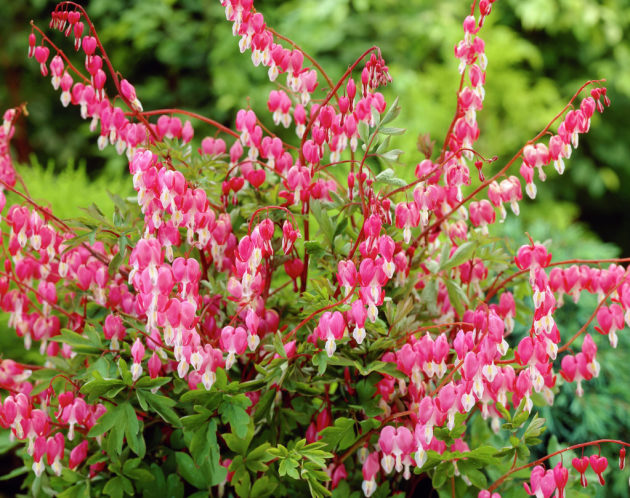
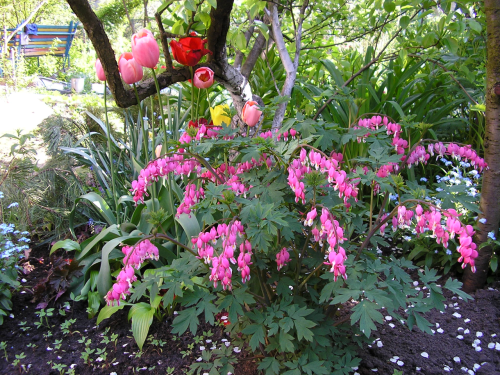
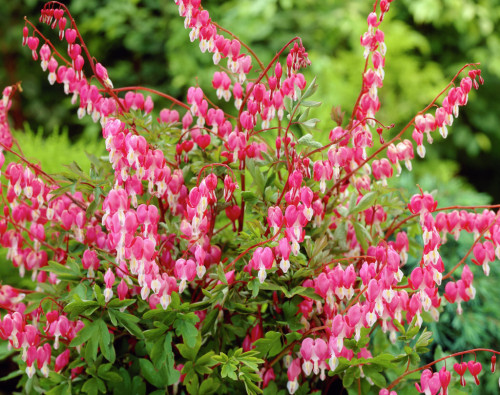
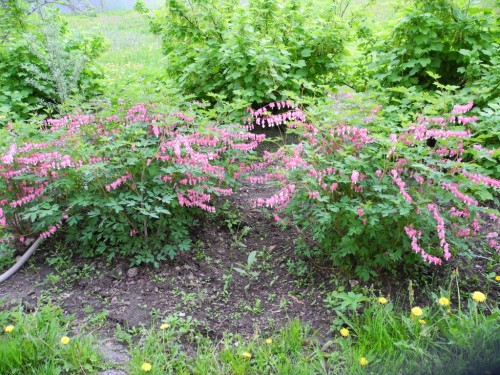
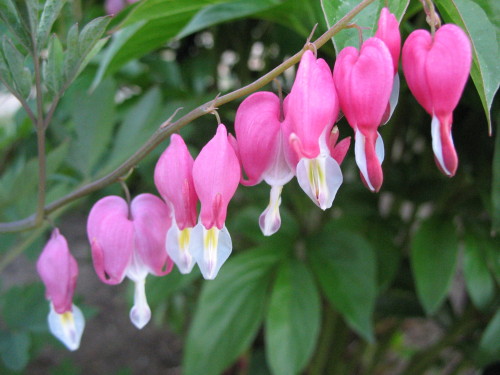
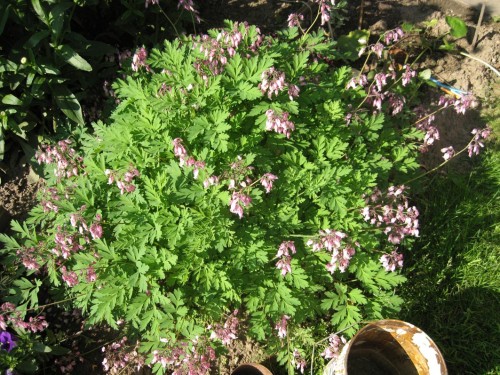
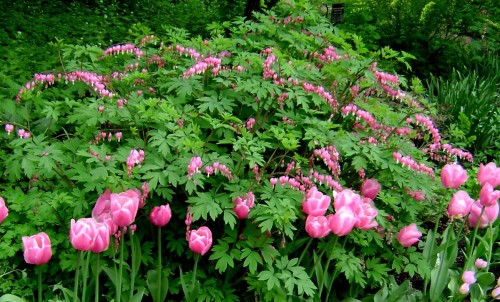
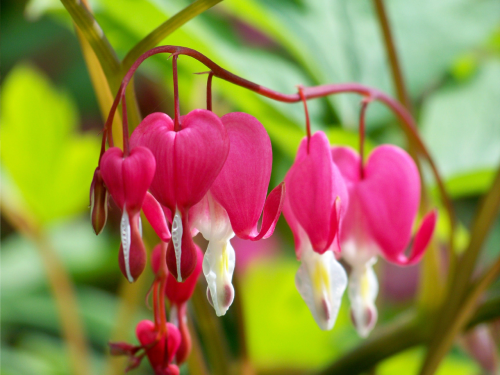
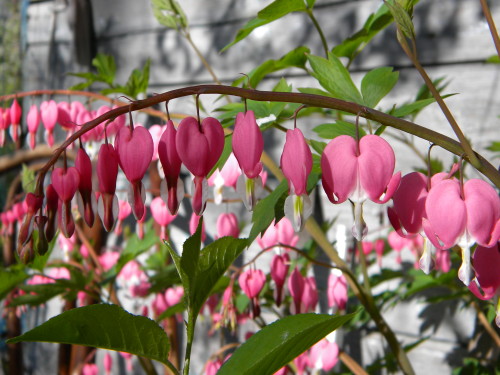












 Start a discussion ...
Start a discussion ...